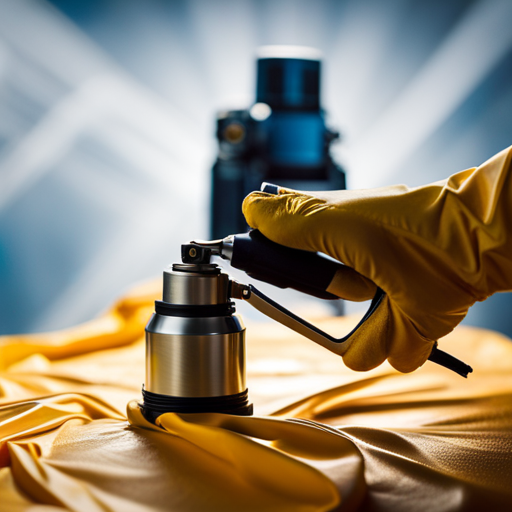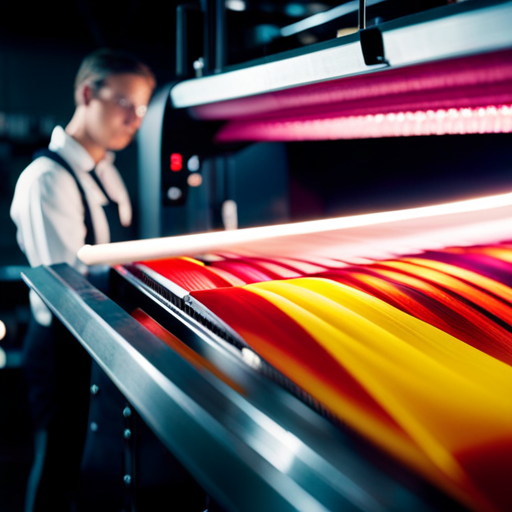Designing Costumes for Performance: Challenges and Solutions

In the world of performance, ‘dressing the part’ takes on a whole new meaning as costume designers face a myriad of challenges. From balancing aesthetics and functionality to managing budget constraints, the art of designing costumes for performance requires a delicate blend of creativity and practicality.
This article delves into the complexities of this craft, offering solutions to common hurdles faced by costume designers in the pursuit of bringing characters to life on stage.
Balancing Aesthetics and Functionality
Balancing the aesthetic appeal with practical functionality is a crucial aspect of designing costumes for performance. In the world of performing arts, costumes are not only a visual representation of the character but also need to facilitate ease of movement and withstand the rigors of live performances. Achieving a harmonious balance between functionality and aesthetics requires practical design solutions that cater to the specific needs of the performance.
Functionality and aesthetics must seamlessly intertwine in costume design. This means that while the costume should look visually appealing and contribute to the overall artistic vision of the performance, it should also allow the performer to move comfortably and execute choreography without hindrance. Practical design solutions encompass a range of considerations such as fabric selection for breathability and durability, strategic seam placement to prevent chafing, and incorporating closures that are both secure and inconspicuous.
Costume designers often collaborate closely with performers and directors to understand the physical demands of the performance and the artistic vision, enabling them to integrate functionality and aesthetics seamlessly. Ultimately, successfully balancing these elements ensures that the costumes not only look stunning on stage but also support the performers in delivering outstanding performances.
Managing Budget Constraints
When faced with budget constraints in costume design for performances, creative material sourcing, cost-effective fabric alternatives, and collaboration with local artisans are crucial strategies to consider.
These approaches can help to maximize the impact of the costumes while minimizing costs, allowing for innovative and visually striking designs within budget limitations.
Creative Material Sourcing
In the realm of costume design for performance, creative material sourcing is essential for managing budget constraints effectively. Sustainable sourcing and ethical production are critical components of this process.
Designers are increasingly turning to sustainable materials such as organic cotton, bamboo fabric, and recycled textiles to reduce the environmental impact of costume production. Ethical production practices involve ensuring fair wages and good working conditions for the workers involved in creating the materials.
Cost-Effective Fabric Alternatives
To address budget constraints while maintaining sustainable practices, costume designers explore cost-effective fabric alternatives that align with their ethical sourcing principles. This involves seeking eco-friendly options and budget-friendly choices that do not compromise the quality and visual appeal of the costumes.
One cost-effective fabric alternative is the use of recycled materials, such as eco-friendly polyester made from recycled plastic bottles or recycled cotton. These materials not only contribute to environmental sustainability but also offer a budget-friendly option for costume production.
Another approach is to explore affordable yet durable fabrics like hemp, bamboo, or organic cotton, which are not only eco-friendly but also cost-effective.
Collaboration With Local Artisans
Costume designers aim to collaborate with local artisans to effectively manage budget constraints while maintaining high-quality craftsmanship in costume production. This collaboration offers a range of benefits, including:
-
Preservation of local craftsmanship: By engaging local artisans, designers can tap into their expertise and knowledge of traditional methods, which often results in cost-effective solutions while ensuring authenticity and high standards.
-
Utilization of traditional techniques: Local artisans possess a wealth of traditional techniques that can be used to create unique and intricate costumes. By incorporating these techniques, designers can add depth and richness to their creations.
-
Incorporation of cultural heritage and indigenous influences: Local artisans are often deeply connected to their cultural heritage and can bring a sense of authenticity to costume designs. By collaborating with them, designers can incorporate indigenous influences, making the costumes more meaningful and representative of the culture they are portraying.
In addition to these benefits, collaborating with local artisans fosters a sense of community and contributes to the sustainability of local artistic practices. Overall, partnering with local artisans not only helps in managing budget constraints but also enriches the costumes with a depth of cultural significance and historical relevance.
Dealing With Last-Minute Alterations
Dealing with last-minute alterations can be a challenging aspect of costume design for performance, requiring quick problem-solving and attention to detail. Time management is crucial when faced with unexpected changes to costumes. Quick fixes are often necessary to ensure that the costumes are ready for the performance. Adaptability and improvisation are key skills for costume designers to possess in order to effectively manage last-minute alterations. Here is a table highlighting some common last-minute alterations and their potential solutions:
| Last-Minute Alterations | Potential Solutions |
|---|---|
| Sudden size changes | Use adjustable fastenings or inserts |
| Rips and tears | Sew on patches or use fabric tape for temporary fixes |
| Stains or discoloration | Strategic positioning of accessories or props |
| Missing or misplaced pieces | Repurpose or replace with similar items |
| Unforeseen design changes | Adapt existing elements or use accessories to modify |
In such situations, the ability to think on your feet and make quick decisions is essential. By having a repertoire of techniques and resources, costume designers can effectively navigate and resolve last-minute alterations, ensuring that the show will go on seamlessly.
Incorporating Performer Comfort
Incorporating performer comfort is an essential consideration in the overall design of costumes for performance, ensuring that the attire not only enhances the visual presentation but also allows the performers to move and express themselves with ease. When designing costumes with performer comfort in mind, several key factors need to be taken into consideration:
-
Performer Mobility: Costumes should not restrict the performers’ movements. Designers need to ensure that the costumes allow for a full range of motion, enabling the performers to execute choreography, dance routines, and any other physical performances without hindrance.
-
Breathability and Flexibility: The costumes should be constructed from breathable and flexible materials to prevent overheating and discomfort during physically demanding performances. This is particularly important for costumes worn during high-intensity dance sequences or performances in hot environments.
-
Safety Considerations: Costumes should not pose any safety hazards to the performers. Avoiding elements that could cause tripping, entanglement, or discomfort is crucial to ensure the well-being of the performers during their act.
Addressing Durability and Maintenance
Ensuring the durability and ease of maintenance of performance costumes is a critical aspect of the design process, requiring careful selection of materials and construction techniques. Durability solutions involve choosing high-quality, sturdy fabrics such as heavyweight cotton, wool blends, or synthetic materials like nylon and polyester. These fabrics are resilient and less prone to tearing or stretching during performances. Additionally, reinforcing stress points such as seams and closures with double stitching or durable fasteners like snaps and hooks can significantly enhance the longevity of costumes.
Maintenance techniques are equally important for preserving the quality of performance costumes. Providing clear care instructions to performers, including proper washing, drying, and storage guidelines, is essential. Furthermore, incorporating removable and washable components, such as detachable collars or cuffs, can make maintenance more manageable and extend the lifespan of the costumes. Additionally, regular inspections and repairs by skilled costume technicians can address any wear and tear, ensuring that the costumes remain in top condition for the duration of their use.
| Durability Solutions | Maintenance Techniques |
|---|---|
| High-quality fabrics | Clear care instructions |
| Reinforced stress points | Removable and washable components |
Integrating Visual Impact
Integrating visual impact in costume design involves a careful consideration of color and texture to ensure that the costumes stand out on stage.
Additionally, the movement and silhouette of the costumes play a crucial role in capturing the audience’s attention and enhancing the overall performance.
Furthermore, it is essential to take into account stage lighting considerations to ensure that the costumes have the desired visual impact under different lighting conditions.
Color and Texture
Creating dynamic visual impact through the strategic use of color and texture is essential in designing costumes for performance. Color coordination plays a pivotal role in evoking specific emotions and conveying character traits. Equally important is fabric selection, as different textures can enhance the overall aesthetic appeal and contribute to the portrayal of a character.
When considering color and texture in costume design, designers must carefully assess the following:
-
Color Psychology: Understanding the psychological effects of different colors on the audience and choosing colors that align with the intended emotional response.
-
Texture Contrast: Balancing textures to create visual interest and ensure that costumes stand out under different lighting conditions.
-
Fabric Durability: Selecting fabrics that not only look visually appealing but also withstand the rigors of performance, ensuring longevity and practicality.
Movement and Silhouette
Optimizing movement and silhouette in costume design is crucial for enhancing visual impact and conveying character dynamics on stage. When designing costumes, it’s essential to consider movement restrictions that may arise from the garment’s construction. Costumes must facilitate the performers’ mobility while maintaining the intended silhouette. This requires strategic fabric choices and construction techniques to ensure that the costumes do not hinder the performers’ movements.
Additionally, silhouette enhancement is a key aspect of costume design, as it can significantly contribute to the visual storytelling on stage. By utilizing various design elements such as shape, line, and proportion, costume designers can enhance the characters’ presence and impact. Attention to detail in silhouette can effectively communicate the essence of the character to the audience, even from a distance.
Transitioning from silhouette considerations, the next crucial aspect to address in costume design is the impact of stage lighting.
Stage Lighting Considerations
Considering the impact of stage lighting is crucial in enhancing the visual storytelling of costumes on stage, thus influencing the audience’s perception of the characters.
When designing costumes for performance, the following lighting considerations should be taken into account:
-
Lighting effects: Different lighting techniques can drastically alter the appearance of costumes on stage. Designers must consider how the costumes will look under various lighting conditions, including spotlights, colored gels, and dynamic lighting changes.
-
Costume visibility: Ensuring that costumes remain visible under different lighting intensities and angles is essential for maintaining the visual impact of the designs. Material choices, reflective elements, and color contrasts can all affect costume visibility on stage.
-
Emotional impact: Strategic lighting can complement costumes by creating mood and atmosphere, amplifying the emotional impact of the performance and enhancing the overall visual experience for the audience.
Considering these aspects of stage lighting will help ensure that costumes have the intended visual impact on stage, contributing to the success of the performance.
This attention to lighting will also need to be balanced with the historical and cultural accuracy of the costumes, which is discussed in the subsequent section.
Overcoming Historical and Cultural Accuracy Challenges
Achieving historical and cultural accuracy in costume design for performance presents significant challenges requiring careful research and attention to detail. Cultural sensitivity and historical accuracy are vital to ensure authentic representation on stage. Designers must navigate research challenges to accurately depict diverse cultural and historical contexts. This involves understanding the nuances of traditional attire, including the significance of specific garments, colors, and patterns within different cultures. Additionally, historical accuracy demands thorough investigation into the fashion of different time periods, considering socioeconomic factors and technological limitations that influenced clothing styles.
| Challenges | Solutions | Importance |
|---|---|---|
| Cultural sensitivity | Collaboration with cultural consultants | Respect for diverse traditions |
| Historical accuracy | Extensive research and documentation | Faithful representation of eras |
| Authentic representation | Attention to detail and craftsmanship | Portraying characters convincingly |
Frequently Asked Questions
How Can Designers Ensure That Costumes Are Not Only Visually Appealing, but Also Practical and Functional for the Performers?
To ensure costumes are visually appealing, practical, and functional for performers, designers must prioritize practicality, aesthetics, and performer mobility. This involves considering costume functionality, fabric choice, ease of movement, and overall comfort for the performers.
What Are Some Creative Strategies for Managing Budget Constraints While Still Creating High-Quality Costumes?
Budget management in costume design requires creative solutions. Prioritizing key elements, such as fabric selection and embellishments, ensures high-quality costumes within budget constraints. Collaborating with costume suppliers and exploring alternative materials can also yield cost-effective solutions.
How Do Costume Designers Handle Last-Minute Alterations and Changes to Ensure That the Costumes Still Fit the Performers Properly?
Costume designers handle last-minute alterations by prioritizing performer comfort and practicality. They ensure that costumes fit properly through meticulous costume fittings and quick adjustments. This approach allows for seamless integration of changes while maintaining the quality of the costumes.
What Techniques Can Be Used to Prioritize Performer Comfort When Creating Costumes for a Performance?
When creating costumes for a performance, prioritizing performer comfort involves selecting costume materials that offer breathability and ease of movement. Designers can utilize techniques such as incorporating stretch fabrics and adjustable closures to enhance costume comfort and performer mobility.
How Do Costume Designers Address the Durability and Maintenance of Costumes to Ensure They Can Withstand the Demands of Multiple Performances?
To ensure costume durability and maintenance for multiple performances, costume designers meticulously select high-quality materials, consider construction techniques for longevity, and implement robust maintenance plans. This approach guarantees that costumes withstand the demands of repeated performances.
Conclusion
In conclusion, designing costumes for performance presents a myriad of challenges. These challenges include managing budget constraints, incorporating performer comfort, and addressing historical and cultural accuracy.
However, with careful planning, creativity, and attention to detail, these challenges can be overcome. Costume designers can balance aesthetics and functionality by selecting materials and designs that not only look good but also allow performers to move comfortably on stage.
Managing last-minute alterations is another important aspect of costume design. This involves having contingency plans and working closely with the production team to ensure that any necessary adjustments can be made quickly and efficiently.
Finally, integrating visual impact is crucial in creating costumes that enhance the overall performance experience. Costume designers have the opportunity to make a strong visual statement and help convey the mood and tone of the production through their designs.
In conclusion, while designing costumes for performance may present challenges, it is a rewarding and creative process. With the right approach, costume designers can create stunning and effective costumes that contribute to a memorable and captivating performance.

Rufus Whitver is a passionate costume artisan and the creative mind behind layuo.com. With a keen eye for detail and a flair for imaginative design, Rufus brings characters to life through the art of costume making. His expertise encompasses a wide range of styles, from historical recreations to fantastical creations. Through layuo.com, Rufus shares insights, tutorials, and a portfolio showcasing his exceptional craftsmanship, inspiring fellow enthusiasts to embark on their own journey into the world of stunning costumes.




